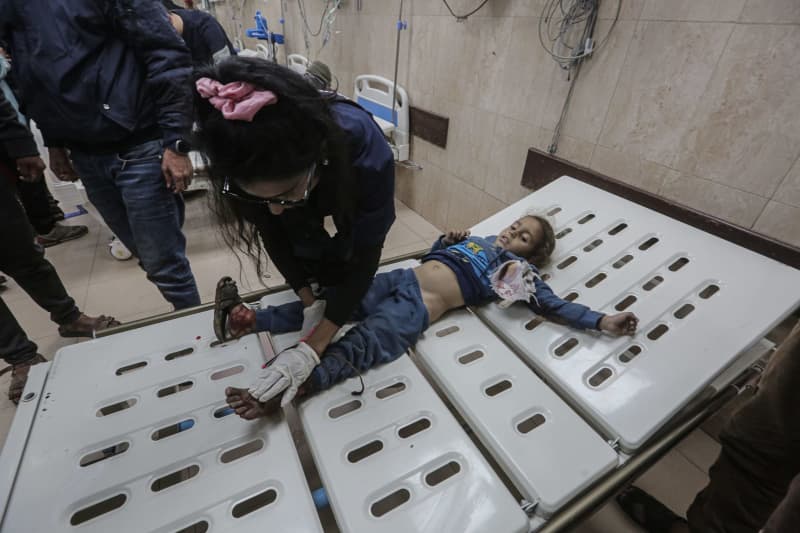On Wednesday, an Israeli military attack in the northern Gaza Strip resulted in the deaths of 21 individuals, with concerns that more victims may be trapped under the rubble, as reported by staff at Kamal Adwan Hospital. The strike targeted a four-storey residential building in Beit Lahia, located near the hospital. Palestinian eyewitnesses recounted the devastation caused by the attack, though the Israeli military has not provided immediate comments regarding this specific incident. The military has previously asserted that Hamas is attempting to reorganize its operations in northern and central Gaza. The ongoing violence has claimed a staggering number of lives, with Palestinian authorities estimating over 44,700 fatalities in the Gaza Strip since the onset of the current conflict, without making a distinction between civilian and military casualties.
In a simultaneous focus on military operations, the Israel Defense Forces (IDF) announced on Wednesday that they had killed two Hamas fighters involved in the October 7 massacre in Israel. One of the deceased was identified as the leader of an attack on an Israeli military post near the Gaza border, which resulted in the deaths of 14 Israeli soldiers. According to the IDF, this individual had actively participated in assaults against Israeli troops during the subsequent conflict. In another operation in Jabalia, the IDF reported the elimination of the head of Hamas’ paragliding unit, who was responsible for directing the militia’s aerial incursions into Israeli territory on the day of the October 7 attacks, utilizing paragliders.
Throughout the unfolding violence, Palestinian militants in the Gaza Strip launched four rockets at Israel early on Wednesday, triggering air raid sirens in communities near the border. The Israeli military noted that two of these rockets were intercepted, while the other two landed in unoccupied areas, resulting in no injuries. The scale and frequency of rocket fire from Gaza have diminished in recent days, indicating a shift in the dynamics of military engagement between both sides.
As the conflict escalates, humanitarian implications in the region have grown dire. The burgeoning death toll and increasing hostilities have exacerbated the already precarious situation for civilians in Gaza. Reports of significant destruction and loss of life indicate a humanitarian crisis, with many residents displaced and in desperate need of assistance. The indiscriminate nature of the bombings raises concerns among international observers about compliance with humanitarian laws, as both sides engage in hostilities that contribute to the rising civilian casualty figures.
In the broader context, the interplay of military actions and retaliatory strikes illustrates the cycle of violence that has characterized the Israeli-Palestinian conflict. These developments not only impact the immediate safety of residents but also contribute to long-term instability in the region. The continued attempts by Hamas to reorganize and retaliate against Israeli forces highlight the complexities of military strategies on both sides, with each aiming to assert dominance while minimizing their losses.
Ultimately, the situation in Gaza represents a tragic confluence of violence, human suffering, and geopolitical complexity. As both Israeli and Palestinian forces continue to engage in hostilities, the urgent need for a ceasefire and diplomatic resolution becomes increasingly apparent. The international community remains watchful, advocating for measures to protect civilian lives and restore a semblance of peace to a region long scarred by conflict. As casualties mount and humanitarian needs escalate, the future of Gaza hinges on the ability of both sides to navigate a path toward reconciliation amid the ongoing violence.

